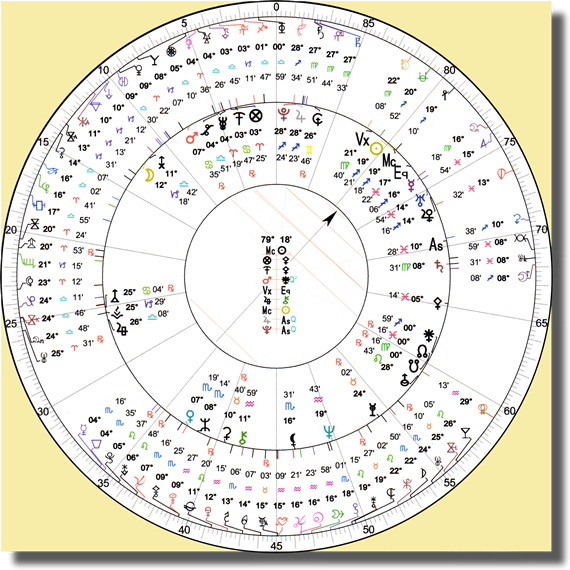
The BOWL, with all the planets posited in a single hemisphere, The BUNDLE, or the WEDGE, with all the planets gathered in approximately 120 degrees, The SPLASH, paradoxically very rare, displays planets fairly regularly scattered around the Zodiac. In approximately fifteen years, several chart patterns have been classified: As with all the other interpretations, the purpose of the exercise is to underline the characteristics that are specific to each pattern in order to flesh out the description of the natal chart, similarly to the assessment of the population of the hemispheres and the quadrants, the interpretation of which dates back to much more ancient times. Of course, no hierarchy was, and cannot be established at this level. Conversely, a chart with scattered planets is more likely to describe a Jack-of-all trades personality, who is rather a generalist with less skills than a specialist.

Somehow, such concentrations infer that the native's characteristics are very typical and emphasized. Consequently, there may be a complete deficiency in other fields. As a result, the interpretation of certain classical patterns started to become available in recently published astrology handbooks.īesides, if we take the example of a chart with all the planets concentrated within two or three signs only, which is extremely rare, it seems quite clear and logical that the pattern may endow the chart owner with an extraordinary high density of strengths in the fields corresponding to the places where the planets are posited. Many case studies were carried out in the '70s and the '80s.


the meaning of planets in house and in sign, dignities, stellium, rulerships, aspects, etc. They observed that chart patterns seemed to have a meaning of their own that was unrelated to other usual factors, i.e.


 0 kommentar(er)
0 kommentar(er)
